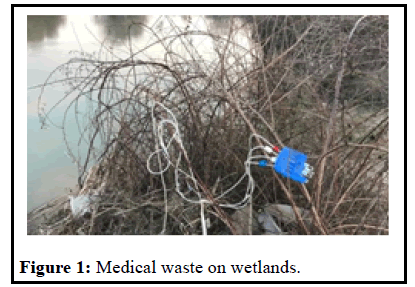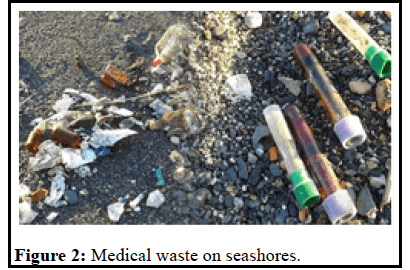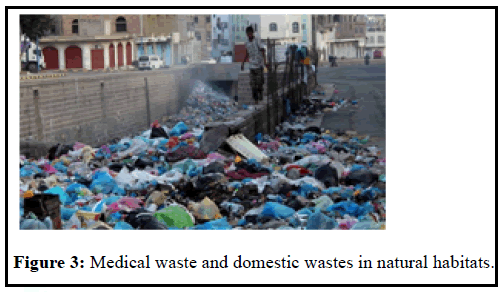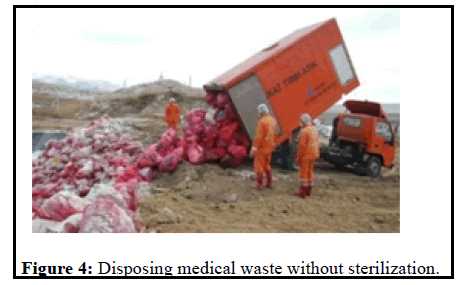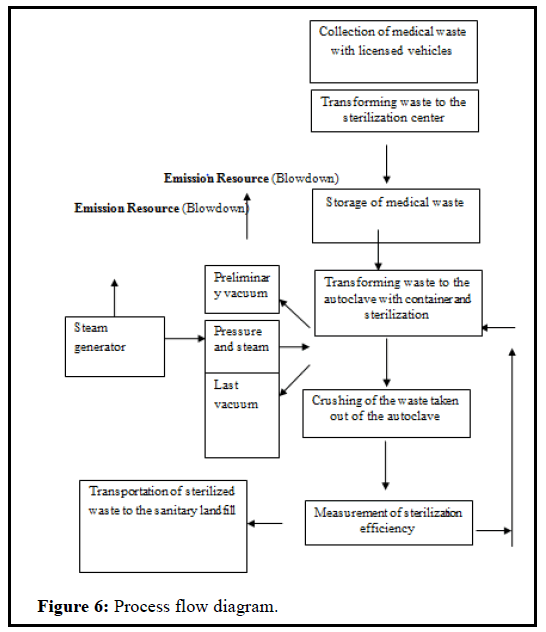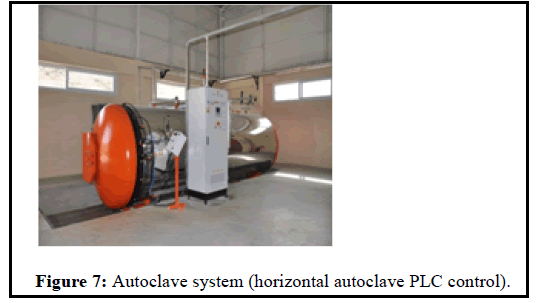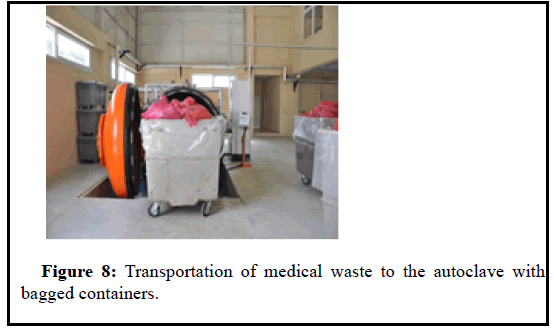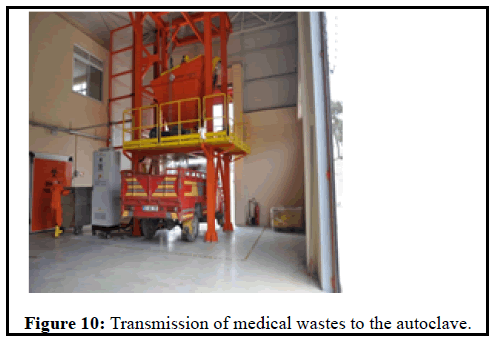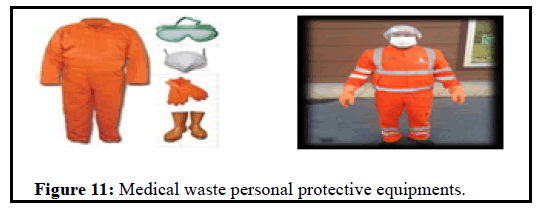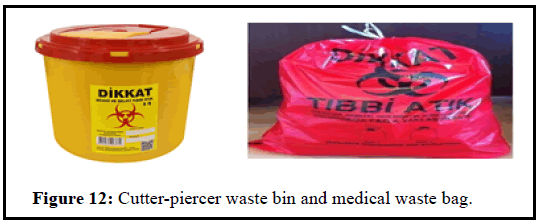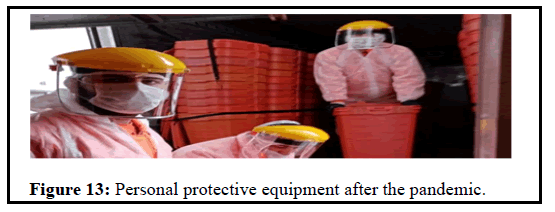Analysis of Medical Waste Management: The Example of Turkey
Received: 09-Jul-2021 / Accepted Date: 23-Jul-2021 / Published Date: 30-Jul-2021 DOI: 10.4172/2155-6199.1000001
Abstract
The dramatic increase in population, expansion of individual comfort zone, and changes in the habit of consumption have brought new problems with them. One of the most significant problems in this respect is the wastes. Developing the management of wastes has become a common problem that needs to be technically solved. In many countries, including Turkey, wastes have been irregularly stored in cities because of different reasons. Urban wastes include radioactive waste, animal products, rotten or expired food products, batteries, dissolvent chemicals, different types of oils, deodorants, products in pressure pots, and medical wastes. The irregular storage of wastes brings a variety of problems with it such as garbage fire, garbage dislocation, and explosion, leakage of wastewater to the underground and surface water, stinking, visual pollution, gas emission, and the greenhouse effect. It is highly significant to dispose of the medical wastes to protect environmental and human health as they involve many different types of biologically hazardous wastes (fetus, scalpel, genotoxic waste, pathological waste, tissue pieces, etc.) as a result of the heterogeneous structure they have. In this frame, the purposes of this study are: Defining and classifying medical waste, determining medical waste management types, analyzing the legal status of medical waste management in Turkey, studying the medical waste management after COVID 19 pandemic and developing solution suggestions for academic studies and practices.
Keywords: Genotoxic; Pathological; Abortifacient; Fetus
Introduction
Medical wastes are inevitable as healthcare services are one of the most crucial parts of societies; preventing any kind of health risks in societies and decreasing health problems naturally cause medical wastes. Pathological and infectious wastes formed as a result of services of healthcare facilities and cutter and piercer tools used by healthcare workers bear a higher risk of injury and infection when compared to the other types of wastes.
It is necessary to practice reliable methods in any kind of process about medical wastes. Following medical waste processes improperly or incorrectly may cause serious risks and unintended consequences for human and environmental health; this is why medical waste management is a very important issue in protecting not only the health of societies but also nature and environment. In this scope, the purposes of this study are: Defining and classifying medical waste, determining medical waste management types, analyzing the legal status of medical waste management in Turkey, studying the medical waste management after COVID 19 pandemic, developing solution suggestions for academic studies and practices, and make contributions to the phase of implementation.
Materials and Methods
Definition of medical waste
Wastes are materials produced as a result of processes including mining, agriculture, and water treatment plants; these materials can be degradable or non-degradable and they include semi-solid sludge. Medical wastes, on the other hand, are defined as infectious, pathological, and cutter and piercer wastes [1]. 70%-85% of wastes produced as a result of the processes in healthcare facilities are riskfree. WHO (World Health Organization) and EPA (Environment Protection Agency) define 15%-20% of the healthcare wastes as dangerous and special [2].
Medical wastes carry different pathogens that may cause water, air, and soil pollution; these pathogens cause diseases that may harm living creatures including human beings. Heavy metals and other types of contaminants caused by the disposal of medical wastes may cause the corruption of ecological balance [3]. According to the research by WHO (World Health Organization) and ABD Environment Protection Agency, it is highly important to dispose of medical wastes with specific methods as they may cause environmental problems because of their heterogeneous content. Medical wastes involve a variety of dangerous ingredients such as residues of experiment animals, human tissues, materials, and tissues infected with HIV, anatomic pieces, pharmaceutical chemicals that may cause mutation; this is why special precautions should be taken while disposing of such materials.
According to the data of the Turkish Statistical Institute in 2018, 82.559 tones of medical waste out of 89.454 were sterilized and 6.895 tones were disposed of by incineration. The number of hospitals in Turkey had been 1449 in 2012 and it increased to 1550 in 2018; the number of medical wastes accordingly increased approximately 20.000 tones. On the other hand, in parallel with the increase in the number of patients and hospitals, the amount of medical wastes has been significantly increasing every year. To manage these wastes with minimum risk to the environment and human health, it is necessary to optimize the collection, transportation, and disposal of these wastes. Amount of medical waste in Turkey per year (Table 1).
| Years | Total | |
| The number of healthcare facilities | 2012 | 1.449 |
| 2014 | 1.498 | |
| 2016 | 1.527 | |
| 2018 | 1.55 | |
| The amount of medical waste (kg) | 2012 | 68.928 |
| 2014 | 74.495 | |
| 2016 | 81.024 | |
| 2018 | 89.454 | |
| The amount of medical waste per (kg/person) | 2012 | 0.2 |
| 2014 | 0.19 | |
| 2016 | 0.18 |
Table 1: The amount of medical waste in Turkey per year.
Classification of medical waste
Medical wastes can be classified as; infectious, genotoxic, pathological, cutter-piercer, and pharmaceutical waste.
Infectious waste: Any kind of body fluid, primarily blood and blood products that can involve infectious agents, human tissues, organs, anatomic pieces, autopsy materials, placenta, fetus, and other pathological materials; in addition to these, gloves, sheet, fabric, bandage, plaster, tampon, swab and similar materials that are contaminated with the above-mentioned fluids, and body waste of patients under quarantine, bacteria, virus holder air filters, laboratory cultures and culture stocks of infectious agents, any kind of material contacted with infected animals or excrement of these animals and wastes occurred as a result of veterinary activities are defined as infectious wastes.
Genotoxic waste: Pharmaceutic or chemical agents that may mutate cell DNA, that is carcinogenic or abortifacient, wastes that contain cytotoxic (antineoplastic) products used in cancer treatments or radioactive materials and the urine and excrement of patients treated with these agents.
Pathological waste: Tissues, organs, body parts, body fluids, and fetuses that are formed as a result of surgical intervention, autopsy, or anatomic or pathological practices.
Cutter-piercer waste: Any kind of waste that may pierce, prick, penetrate, scratch or cause physical injuries such as an injector and any kind of medical tool used on patients, lancet, capillary tube, scalpel, knife, serum set injector, surgical suture needle, biopsy needle, branute, broken glass, lamp, lamella, microscope slide, broken tube and Petri dishes [1].
Pharmaceutical waste: Expired drugs, drugs with damaged packages, vaccines, serums, and other pharmaceutical products, used gloves, pipes, bottles, and boxes [4].
As can be seen in the definitions above, it is crucial to properly manage waste such as biopsy needles, Petri dishes, fetuses, and different kinds of tissues or organs produced as a result of pathological processes. It is necessary to take a series of precautions throughout the processes of forming waste, storing temporary waste, transportation, and disposal of wastes. There should be some specific standards for special waste bins, bags, personal protective equipment, (gloves, masks, dresses, etc.), collection and transportation instruments, and disposal facilities and all processes should carefully be followed accordingly.
Medical waste management
Different methods have been used in disposing medical wastes. When there is a high amount of daily waste (10 tones/day) the method of waste incineration is used; on the other hand, chemical disposal methods are preferred according to the type of waste. Disposal methods can generally be classified as chemical disposal, microwave incineration, hydroclave, incineration (thermal disposal method), and autoclave. The purpose of this study is to discuss the direct disposal of medical wastes in garbage dump sites without undergoing sterilization and disposal of medical waste after sterilization in terms of the possible threats to human and environmental health; in the light of this discussion, it is aimed to analyze the autoclave method (steam sterilization) used in the city of Van.
Disposing of the medical waste without sterilization
Most of the current medical waste disposal methods are neither affordable nor environmentally acceptable. Mismanagement of medical waste not only may destroy the individuals working at clinical facilities, but also cause negative environmental effects in neighborhood and close regions [5]. Storing hospital wastes without any kind of sterilization causes serious environmental pollution and problems; leachate, gases, and dust resourcing from these wastes cause contamination, spreading of contagious diseases. Moreover, radiation and different kinds of chemical materials pollute the environment if they aren’t properly sterilized and disposed of [6].
The proper disposal of medical wastes starts with the collection step; if the collection, transportation, and disposal steps aren’t carefully and properly followed, there may be serious environmental problems; diseases resourcing from crowded places such as seashores, picnic areas, parks, and recreations will increase. Medical wastes have been disposed of along with the domestic wastes or buried under the ground with lime (Figures 1-5). Unfortunately, these dangerous wastes haven’t been specifically managed around the world; in addition to this, they are sometimes kept in social fields and thrown to the natural environments, which are the worst places to store such hazardous materials. Medical wastes involve blood and blood products; moreover, different kinds of medical wastes such as body wastes, fecal and urinary agents of patients are combined with domestic wastes and put into garbage containers. As a result of this process, they are exposed to sunlight and it becomes possible for the bacteria and viruses to have available living spaces.
Disposing medical wastes after sterilization
Wastes are being disposed of through the process of the steam sterilization method. There are two different types of steamed sterilization: Primary Shredder System and Tertiary Shredder System.
Primary shredder system: Shredder and steamed sterilization are combined in this method. The autoclave is completely closed, wastes are transmitted into the machine; firstly, the shredding process is completed and after that step steamed sterilization is processed in the same place. This system, once often used, has brought many problems with it in time. The non-sterilized waste entering the system is first processed through a shredder system with gears to minimize the volume; in case of a problem in the shredder gears or automation, the intervention is practiced without sterilization. In this case, technicians may contact the non-sterilized medical waste, which is highly risky and dangerous. On the other hand, it has mechanical hardware that should be carefully and specifically disinfected. The use of this system has decreased because of the developing technology in time and the production of the tertiary shredder system.
Tertiary shredder system: The tertiary shredder medical sterilization method is healthier and it ensures optimum use when compared to the primary shredder system. In this system, the wastes are sterilized with steam and sent to the shredder after that step. In case of a problem in shredder gears, the risk of infection is minimized as the waste is already sterilized. This method can be summarized as:
Medical wastes are transmitted to the containers covered with special autoclave bags and placed into the cold storage depot. The autoclave bags are resistant up to 180ºC humid-compressed heat and they are vapor permeable. The filled container is weighed on the platform weighbridge. The net medical waste weight is sent to PLC and recorded. The lid of the horizontal sterilization machine with different capacity is opened and the weighed container is moved into the autoclave. The lid of the sterilization boiler is automatically closed. A preliminary vacuum is conducted in the sterilization boiler. The vacuumed air is circulated through the air filtering system and sent to the atmosphere. A pressure between 3, 2, and 4 bars is applied on the autoclave and sterilization process starts. Steam temperature is min. 123ºC and the temperature is increased up to 158ºC. Medical waste is sterilized through the saturated steam and pressure. The sterilization process starts when the saturated steam is sent to the autoclave and the temperature increases to 123ºC; the vacuuming process is completed when the steam contacts with the waste.
The general working principle throughout the process of steam sterilization is presented above. To ensure the validity of the sterilization process, set by the Ministry of Environment and Urban Planning, there should be a minimum of 4 log10–6 log10 decrease in Bacillus stearothermophilus, or Bacillus subtilis bacteria spores [1].
At the end of these specific steps, the validity of the sterilization process is determined through different indicator analyses (Figures 6-10).
As the wastes after the process are sterile, it is healthier to transmit them to the storage yards. On the other hand, based on the water used during the system process, the waste liquid should be accumulated in an impermeable cesspool, necessary analyses should be completed and municipal employees should transmit them to the safe storage yards. At this point, it is significant to note the importance of disposing of wastewater properly.
In a thesis study about the topic, wastewater of Van Medical Waste Sterilization Facility is analyzed and the below-mentioned information is presented [7].
24 hours composite wastewater samples are taken once in a month for 12 months in Van Medical Waste Sterilization Facility; the necessary analyses are carefully completed. Characterization parameters of the wastewater are compared to the Water Pollution Control Regulations. When the characterization values are analyzed, it is seen that the water in the medical waste sterilization facility has the features of typical domestic wastewater [7]
The volume of the solid wastes is reduced in Van Medical Waste Sterilization Facility thanks to the crushing process after sterilization. Medical Waste Sterilization Facility wastewaters’ characteristics vary according to the processes conducted. The reasons for this change depend on the amount of medical waste produced in healthcare facilities and hospitals. According to the characterization results, Van Medical Waste Sterilization Facility wastewater pollution load is not very high. However, chemical oxygen demand in a few months and the Pb and Cd values (1,05-1,09 mg/L) in Leach analysis of medical waste is a little higher than the limit value; this is why, conducting chemical treatment (coagulation, flocculation, etc.) only in these months can be sufficient to decrease the toxicity impacts and ensure discharge standards [7].
Legal status of medical waste management in Turkey
Principals about the management of medical waste in Turkey are determined with “Medical Waste Control Regulation” came into force on 01.25.2017. According to this regulation, medical waste producers are responsible for the collection and temporary storage of waste at source. Municipalities, on the other hand, are responsible for the collection of medical wastes from temporary storage, transportation, sterilization, and disposal of them according to the Medical Waste Control Management.
With the start of Coronavirus in Turkey, General Directorate for Environmental Management, within the structure of the Ministry of Environment and Urban Planning, issued 3 circular letters about the management of waste. These circular letters are 2020/17 Circular about COVID-19 Precautions in the Management of Personal Hygiene Materials such as Disposable Mask and Glove (April 7, 2020), Precautions Circular about COVID-19 Pandemic and Waste Water Management (April 8, 2020), Ship Waste Management Circular throughout COVID-19 Pandemic (April 10, 2020) [8].
Management of medical waste in Turkey has been carried out according to the standards of the Medical Waste Control Regulation. Collection, transportation, and disposal methods are explained in detail in the Regulation, and the sterilization process has been carefully followed in Turkey.
The purpose of the Regulation is to set the principals, policies, and programs and determine and practice the legal, managerial, and technical rules for ensuring safety starting from the production until the disposal of medical waste. According to the Regulation
Medical Waste shall not be directly or indirectly released to the receiving environment in a way that harms the environment or living beings.
Medical Waste shall be collected separately at source, transmitted in the healthcare facility, stored at temporary storage, transported to the medical waste processing facility, disposed of in a way that it doesn’t harm the environment or living beings.
On the other hand, in line with the determined principals;
Releasing medical waste directly or indirectly to the receiving environment in a way that it harms the environment or living beings is prohibited,
Medical wastes shall not be combined with other dangerous or safe wastes such as a package or domestic waste,
It is essential to collect medical waste at source, transmit to the temporary storage, transport to the sanitary landfill, and separately dispose of.
On the other hand, collection, transportation, and disposal processes of medical waste are carefully followed by the Ministry of Environment and Urban Planning, and Provincial Directorates it delegated through Mobile Waste Control System. All data are transmitted to the digital environment and followed through this system.
The system prevents transmission and release of non-sterilized medical waste to different sites, and thus it is now possible to avoid serious health problems caused by uncontrolled waste disposal, once very common in Turkey (Figures 11 and 12).
Medical waste management after COVID-19 pandemic
Globalization and the population have been significantly increasing in today’s world while the resources have been unconsciously consumed. As a result of this, it is obvious that there has been a dramatic increase in the amount of waste. Products that modern people use become waste once they are consumed and pose a threat to the environment and human health if they aren’t properly disposed of. It is thus highly important and necessary to minimize the negative effects of wastes by collecting, separating, transporting, storing, and finally disposing of them properly. The worldwide amount of domestic waste, including organic paper, plastic, ceramic, glass, and metal, was 2.01 gigaton; this amount was 32.21 megaton in Turkey in 2018 [9]. As known, the waste collection process is under the responsibility of Municipalities, which is the same in Turkey.
COVID-19 is the biggest global health problem experienced by humanity since the 2nd World War. There are now new regulations for preventing and fighting with the disease and the lifestyle of humans has dramatically changed. There has been a significant increase in the use of disposable plastic masks, gloves, paper towels, etc.; the waste amount has accordingly increased. Another product group that has been increasingly consumed after the pandemic is hygiene products such as toilet papers, napkins, paper hand towels, and wet wipes presented in packages. These disposable and personal materials are preferred instead of terry cloths or towels that can be used more than once. As a result of this new habit of humanity, the amount of waste has been increasing as disposable products cannot be used more than once and should be thrown away once they are used. In addition to this, there has been an increase in the demand for plastic products, which are used in patient treatment and protection of medical staff, such as gloves, masks, life support equipment, respirator, and injectors. This is why not only the control and management of plasticbased waste but also the disposal of them is crucial.
The amount of medical waste produced in hospitals depends on the number of infected patients. According to research in China, an infectious patient staying in a hospital causes 0.68 kg of medical waste per day [10]. Fighting with contagious diseases requires more medical resources when compared to other diseases. In addition to the daily medical waste per patient, it is necessary to use masks, gloves, protective glass, and clothes if the patient has a contagious disease. When all these materials are taken into consideration, this number increases to 2, 5 kg/day, bed [11]. Improper and incorrect management causes irreversible negative effects on environmental and human health. Management of medical wastes has become quite important and significant precautions had to be taken as a result of the pandemic all around the world.
Before the start of the current pandemic, there had already been several serious environmental problems including the ecosystems of land and sea; plastic wastes were specifically considered as one of the biggest problems in terms of environmental health. According to a recent study on the issue, social distancing precautions, lockdown, restriction about travels, staying at home, and increase of tourism activities have decreased in the number of waste and many beaches around the world have become cleaner when compared to the time before the pandemic [12].
However, the pandemic has created some new problems in municipal waste procedures and management such as safety and health precautions for workers, new waste sterilization processes, general rules for the sector of waste, etc. The Ministry of Environment and Urban Planning circular about the waste involves provisions about the steps to be followed during accumulation, collection, transportation, temporary storage, the transmission of waste to processing facilities [13]. There are also instructions for the workers in the circular. According to the circular by the Ministry, hygiene material wastes of houses and workplaces should be collected with a grey colored or grey labeled equipment in the statue of ‘other waste’; when ¾ of the waste bag in the equipment is filled, the bag should be sealed and a second bag should be used. After waiting for the sealed waste bag in the temporary storage plant for 72 hours, it should be delivered to the municipality in the scope of domestic waste, in other words ‘other waste’. According to the circular, waste in the mass quarantine areas should be treated as medical waste. In addition to these, some local governments placed medical waste bins in some parts of cities for disposable gloves and masks.
Another sector affected by the pandemic is recycling; the process of collecting waste at separate source and transforming the collected materials into raw materials is called ‘recycling’. It becomes possible to have new materials or objects from materials that would otherwise be thrown away as trash. Greenhouse gas and wastewater amount decrease, energy-saving becomes possible, employment in the sector increases, and clean technologies are developed thanks to recycling. In addition to this, it is possible to save time and energy in waste storage and incineration facilities.
Corona Virus (COVID-19), first occurred in Wuhan, China has spread all around the world in a short time and affected the lives of thousands in many respects. The World Health Organization declared that the disease has caused pandemic and started working for determining the steps to be taken to control the disease; however, as the virus was new and unknown, it took some time before determining what to do. The economy is seriously affected and social life almost stopped in many countries. Quarantine departments were established in many healthcare institutes to separate, analyze, and treat COVID patients. Besides the increase in the number of medical waste per day, there has been a dramatic increase in domestic and recycling waste, glove, mask and different types of disposable materials; the problems that were never experienced have occurred along with this new era in human life.
Both health and diseased individuals have started to use glove and mask in daily life to prevent the virus. One of the biggest problems in the field has been waste management. It was impossible for the administrators to quickly determine how to dispose of these materials (glove, mask, domestic waste, and different hygiene materials). Medical waste collection and transportation companies have been continuing to collect medical waste, waste of the quarantine departments, and field hospitals after the pandemic (Figures 13). However, there is the problem of disposing of the disposable mask, glove, and other hygiene materials. It is necessary for these companies, responsible for the collection, transportation, and disposal of medical waste of COVID quarantine departments, to take additional measures and determine new, reliable procedures. Not only the health of general society but also the well-being of workers has to be taken into consideration. New personal protective equipment for the workers and new techniques for disposing of medical waste are the priorities.
Workers responsible for collecting, carrying, and disposing of the domestic waste combined with disposable masks, glove, and other wastes are under threat especially if a patient carrying the virus contacts with these materials. Facilities, in which garbage bags are manually opened and separated, are at higher risk.
In line with the new developments, many healthcare institutions and companies responsible for the disposal of medical waste have increased their precautions and started to follow more reliable, sustainable processes.
In addition to the personal protective equipment, companies started to use face shields (Figure 13), disposable daily clothes (Figure 13), hand sanitizers, etc. that decrease the risk of infection.
It is highly crucial to be prepared for any kind of scenario, and organize and follow a reliable waste management process during the pandemic. It is determined that managing the disposal of medical waste through the pandemic, following a well-prepared procedure all around the world is important for protecting environmental and human health. The circular about COVID 19 precautions in the Management of Personal Hygiene Materials such as Disposable Mask and Glove, issued by the Ministry of Environment and Urban Planning (2020/12), explains how to manage the wastes after the pandemic. The purpose of precautions mentioned in the circular letter is to minimize the risks and optimize the processes of collection, transportation, separation, and disposal.
Results and Discussion
The waste management after COVID 19 pandemic has become more important along with the other factors that affect waste variety such as urbanization, industrialization, and an increase in population. The number of paper and plastic products has increased the materials that are used for treatment and precautions during the pandemic are different; on the other hand, some recycling facilities are closed for a while. The wastes that are now more dangerous because of the virus and may cause infection, have important negative effects on clean water supply, healthy and quality life, environment, climate, and employment.
When the content of the medical waste collected from healthcare institutes (hospitals, clinics, maternity hospitals, healthcare centers, dispensaries, village clinics, morgues, autopsy centers, veterinary hospitals, blood centers, dialysis centers, COVID 19 quarantine units) are analyzed, it is seen that careful, organized and sustainable management of this process is crucial.
The wastes of these facilities (including the waste that may cause mutation on genes, chemical, pharmaceutical, and genotoxic wastes) shouldn’t be thrown directly to the receiving environment as it will lead to serious ecological destruction. Waste thrown to the unsanitary disposal areas will harm workers, the third persons entering these fields, living creatures feeding on these wastes through the air, water, and soil. The collection, transportation, and disposal of these wastes should be carefully organized and followed.
Integrated waste management understanding and principles should be implemented and put into practice as soon as possible. Unsanitary disposal areas, causing ecological destruction, loss in economy, and employment should be closed, reorganized, and rehabilitated. Medical wastes shouldn’t be directly or indirectly thrown to the receiving environment (water, soil, areas used for social activities, waste storage sites). They should be properly collected, transported, and sterilized before disposing of the waste.
Pathological wastes that have undergone any kind of chemical processing should be separately collected and properly disposed of in incineration plants. The processes of collection, transportation, and disposal of the medical waste in the healthcare facilities and temporary waste storage, should be carefully planned and practiced by taking necessary precautions. The employee working in these processes should be regularly educated in line with the developments in the field. Emergency scenarios should be planned and the sector should be ready for any change in the sector.
Conclusion
Biological and chemical indicator processes should consistently be followed in medical waste disposal facilities. Analyses of wastewater and air resulting from the processes in these facilities should be completed in line with the changes and necessities; wastewater should be kept separately in the watertight cesspool and authorized institutions should dispose them of according to the procedures. Tertiary shredder sterilization system should be preferred instead of the primary shredder autoclave to ensure a safe and sustainable sterilization process during the disposal of the medical waste.
References
- Çetinkaya AY, Kuzu SL ,Demir A (2019) Medical waste management in a mid-populated Turkish city and development of medical waste prediction model. Environ Dev Sustain 22: 6233-6244.
- Taghipour H, Mosaferi M (2009) Characterization of medical waste from hospitals in Tabriz, Iran Sci Total Environ 407 (5):1527-1535
- Â Jiang C, Ren Z, Tian Y, Wang K (2012) Application of best available technologies on medical wastes disposal/treatment in china (with case study). Procedia Environ Sci 16: 257-265.
- Â FaikoÄŸlu R (2007) Hospital waste management, disposal methods and strategy suggestions, doctoral Thesis.
- Â El-Haggar SM (2007) Sustainable industrial design and waste management.
-  Yılmaz S, Arpacı A (2014) Disposal of waste from health institutions and water pollution.
- Â Okur D (2019). Sterilization process and performance evaluation in disposal of medical wastes: The case of van province (master's thesis).
- Â Yong Z, Gang X, Guanxing W, Tao Z, Dawei J (2009) Medical waste management in China: A case study of Nanjing. Waste Management 29 (4): 1376-1382.
- Â Yu Hao, Sun Xu (2020) Reverse Logistics Network Design for Effective Management of Medical Waste in Epidemic Outbreaks: Insights from the Coronavirus Disease 2019 (COVID-19) Outbreak in Wuhan (China). INT J ENV RES PUB HE. 17(5).
- Yu Hao, Sun Xu (2020) Reverse Logistics Network Design for Effective Management of Medical Waste in Epidemic Outbreaks: Insights from the Coronavirus Disease 2019 (COVID-19) Outbreak in Wuhan (China). INT J ENV RES PUB HE. 17(5).
Citation: Aslan AK, Tascia S, Dokucu A, Tas S, Adiguzel F, et al. (2021) Analysis of Medical Waste Management: The Example of Turkey. JBRBD 12:S5:001. DOI: 10.4172/2155-6199.1000001
Copyright: © 2021 Aslan AK, et al. This is an open-access article distributed under the terms of the Creative Commons Attribution License, which permits unrestricted use, distribution, and reproduction in any medium, provided the original author and source are credited.
Share This Article
Recommended Journals
Open Access Journals
Article Tools
Article Usage
- Total views: 3016
- [From(publication date): 0-2021 - Apr 17, 2025]
- Breakdown by view type
- HTML page views: 2217
- PDF downloads: 799

